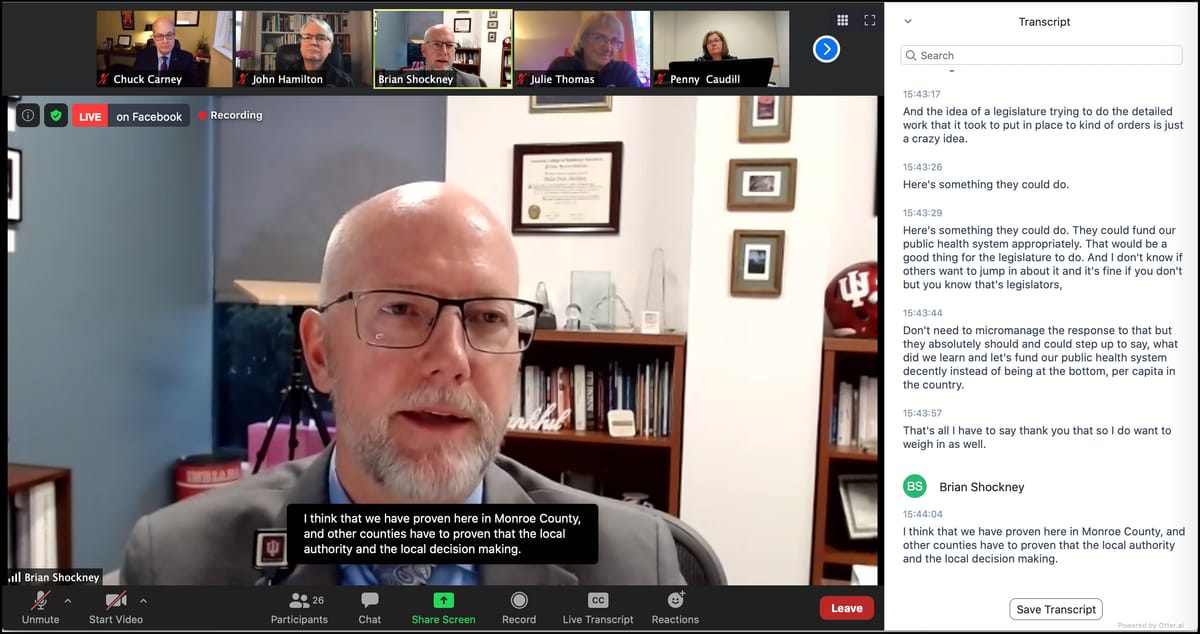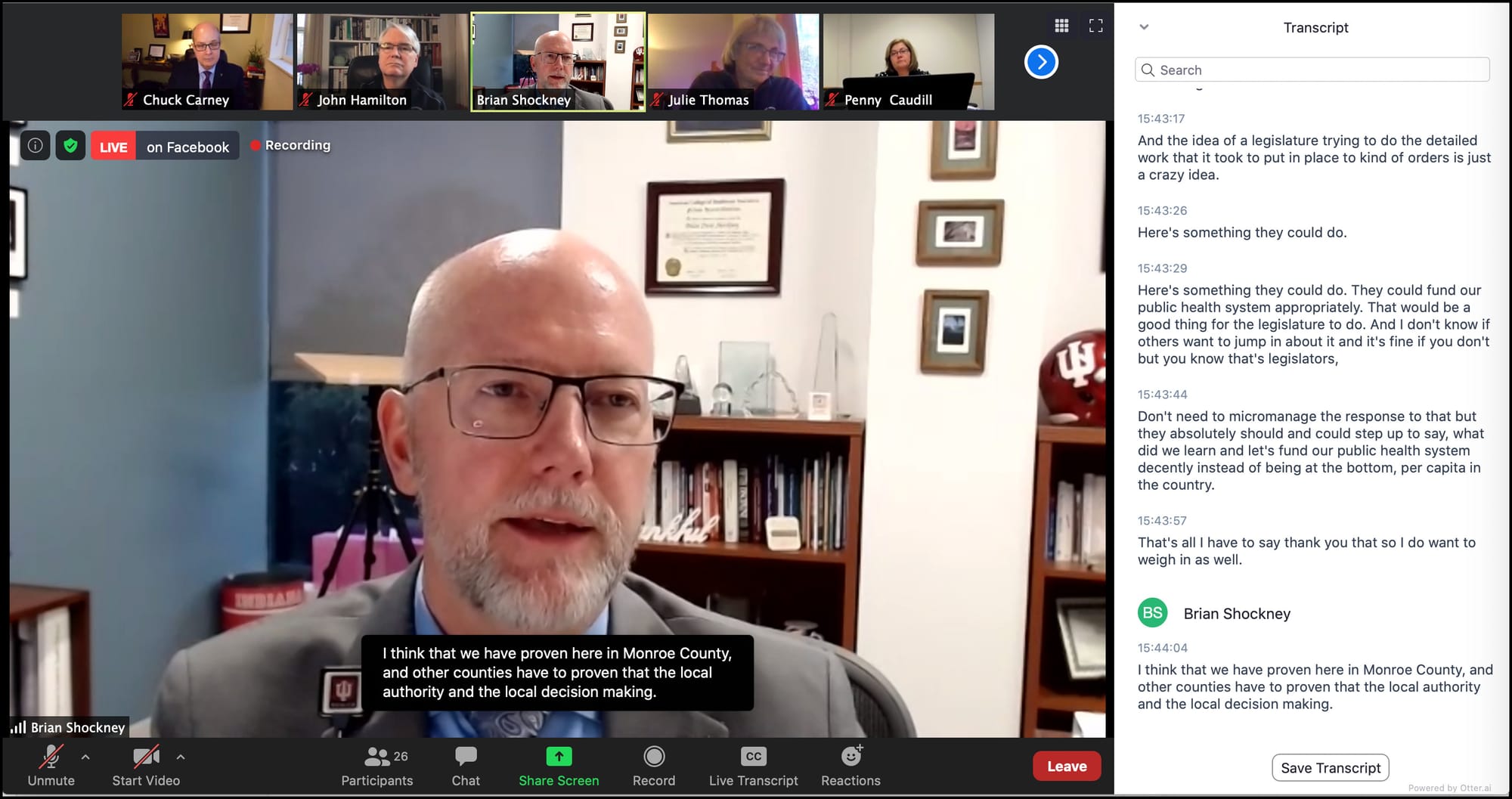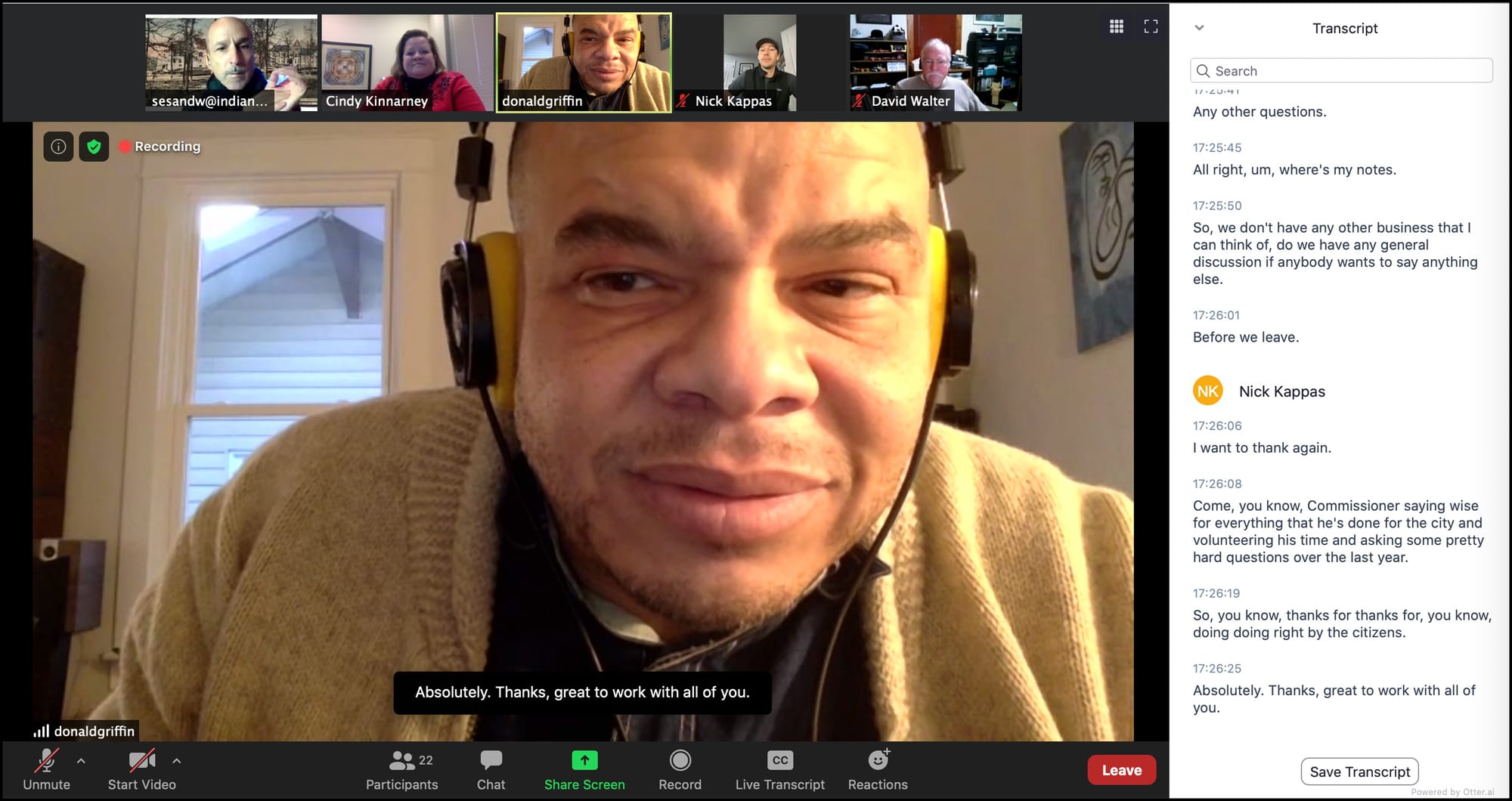Opinion: Preserving live closed captions for post-pandemic times should get focus now



Monday of Christmas week was the last meeting of 2020 for Bloomington’s redevelopment commission (RDC).
It was a landmark event for a city of Bloomington government meeting.
It was not special because the meeting was held using Zoom’s video-conferencing platform. Video-conferenced public meetings have been standard since the spring. That’s when Indiana governor Eric Holcomb’s emergency health order made remote participation legal for government officials.
What made the RDC meeting special was the automatic closed captioning and live transcription function for the Zoom video-conferencing software, which had been activated for the first time.
The following week, the regular press conference of local leaders about COVID-19 pandemic response also featured Zoom’s automatic closed captioning and transcription.
The improved accessibility of meetings to the Deaf, or people who are hearing impaired, is an obvious benefit.
It’s a benefit for everyone.
During the meeting, the searchable live transcription can help a late attendee answer the question: Have they talked about Topic X, yet? After the meeting, the recorded version of a Zoom video conference includes the searchable transcript, which is synchronized with the video. Find the first place where someone mentioned “hospital site” in the transcript and you can go right to that spot in the video.
It’s important to be able to find the original audio, because the automatic speech recognition is not perfect, even though it is very good. For example, it does not always nail the difference between “can” and “can’t.”
Names are a challenge. When IU media relations director Chuck Carney threw to IU Health’s Brian Shockney during the press conference it came out like this: “Let’s next go to Brian shock, need…”
Still, the benefits easily outweigh the imperfections.
What will happen to these benefits when the emergency health order eventually ends?
It’s already been widely acknowledged that the continued use of a video-conference portal into meetings for members of the public would be a great enhancement to participation in local government.
The possibility of continued availability of live closed captioning and transcription is another strong argument for maintaining a video-conference component of government meetings.
The technical details of making this work after in-person meetings resume are probably not trivial. Will it require government officials who are physically present to be logged into Zoom via their laptop? How will microphones for Zoom be coordinated with the mics that are used for sound amplification in a room like city council chambers? How will Zoom recordings be archived?
Policy issues need to be noodled through. How can Community Access Television Services (CATS) fit most usefully into this approach? Does the availability of imperfect automatic transcriptions have implications for the way that meeting minutes are created?
The start to the vaccine rollout means the end to the emergency health order is on the horizon in the next few months, if not sooner. The end could come sooner, if the General Assembly decides to act on some pre-filed legislation that would end the governor’s order.
That means the technical and policy issues need attention now.
What does it mean to give attention now to the technical issues? It could mean test runs at upcoming meetings: A couple members of a public agency would show up at the in-person venue where the group will eventually resume meeting.
What does it mean to give attention now to the policy issues? It could mean discussion by city councilmembers and the city clerk at a regular meeting of the council. Or it could mean assignment of the topic to an ad hoc committee. It could mean adding the topic to the work plan of one of the mayor’s working groups on pandemic response.
The availability of closed-captioned and live-transcribed video of government meetings is a great benefit. It’s worth taking steps now to ensure we continue to enjoy that benefit after the pandemic is over.




Comments ()